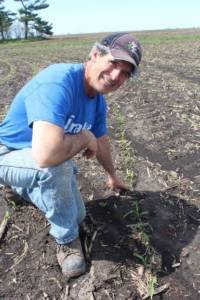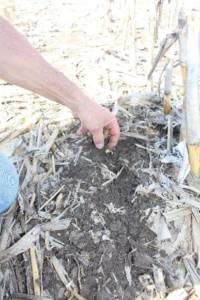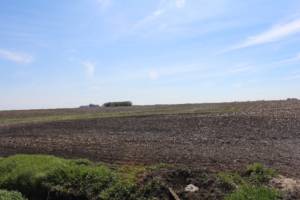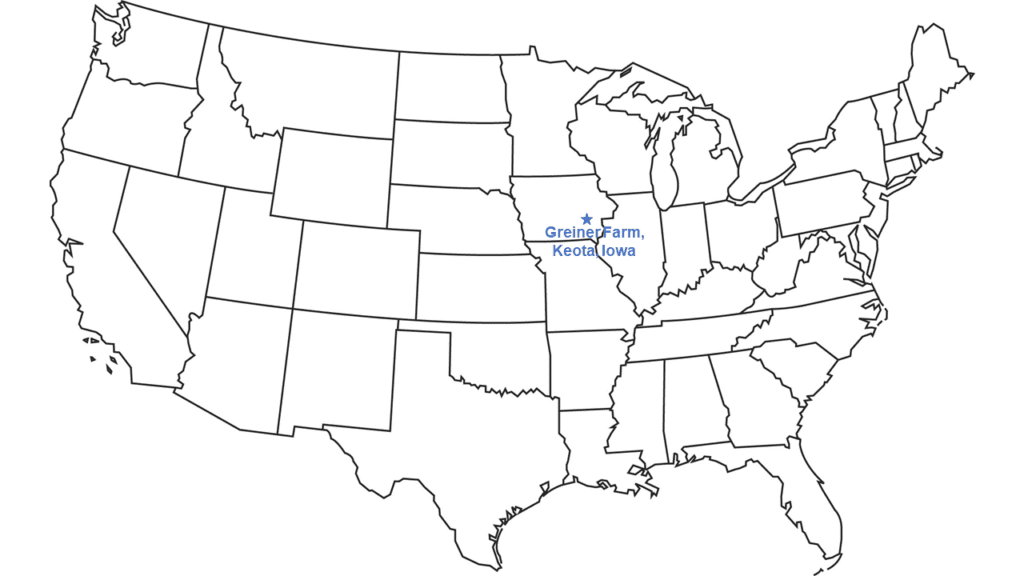We finished planting our soybeans on May 2. That’s the earliest we have ever been done! We had a couple weeks of great weather that allowed us to plant all our corn and soybeans, and the field and soil conditions were really good. All the seeds went into the ground really well, with good soil moisture levels.

Shortly after we finished planting, we had an unseasonable cold snap that included frost. Fortunately, most of our crops hadn’t emerged yet. And the corn that had emerged still had the growing point underground, so it wasn’t damaged by the frost. To date, we don’t expect any places in our fields will drown out or fail to emerge, so we shouldn’t have to replant any soybeans or corn.
We have also completed spraying all our pre-emergence herbicides to control early season weeds. Those weeds would compete for soil nutrients and moisture as our young soybeans and corn are getting established in the fields. These herbicides provide residual weed control, meaning they keep weeds for growing for a few weeks, allowing the crops to move past several early growth stages before having to compete with weeds. Fortunately, we got about 1.25 cm, or .5 inches, of rain the week after we finished planting. This rain activates the pre-emergence herbicide so that it effectively controls weeds.

We will be scouting each of our fields about once per week for the next 6 to 8 weeks, checking for stands, insect damage and weeds. If needed, we can adjust our post-emergence weed control plan to take care of problems. Based on when we finished planting and the weather forecast, we expect to spray post-emergence herbicides in early June, which was about the time we started planting last year. Every year is different.
Recently, we have made dramatic changes in how we care for our pigs. The COVID-19 outbreak has forced many of the pork processing plants in the Midwest to close or operate well below capacity to help protect worker health. These closures have started affecting the plants we deliver pigs to, so we have changed diets for our pigs of all ages to provide less energy and are limiting the feed they get each day. Our hope is to slow their growth enough that we can avoid euthanizing any pigs.

For example, my second son, Kalen, has several loads of pigs in his barns that should have been delivered a few weeks ago. The diet changes are keeping them from getting too big, so that they can be delivered when plants have capacity. Euthanizing pigs would be an absolute last resort, but we may get to that point in a few weeks if packing plants aren’t able to start reopening.
The U.S. farm economy is not rosy right now. The coronavirus pandemic has impacted prices for all our commodities, and it will take time to get through it.

